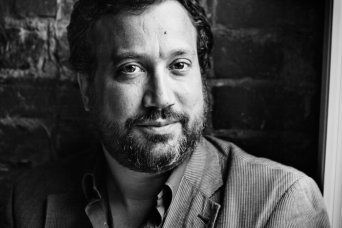- About
- Topics
- Story
- In-Depth
- Picks
- Opinion
- News
- Donate
- Signup for our newsletterOur Editors' Best Picks.Send
Read, Debate: Engage.
| topic: | Political violence |
|---|---|
| located: | Afghanistan |
| editor: | Yair Oded |
Last week, the U.S. government banned Eyal Weizman, the founder and director of Forensic Architecture - a research group using architectural software to investigate human rights violations - from entering the United States, citing a possible security threat as the cause.
Forensic Architecture is a London-based multidisciplinary research agency that uses architectural technologies to investigate and expose state violence and human rights violations across the world. Led by Weizman, the research group includes a wide range of professionals, from architects and software developers to journalists and artists.
Weizman, who is a dual Israeli-British citizen, was scheduled to attend a series of lectures at top U.S. universities, as well as the opening of his agency’s exhibition at the Miami Museum of Art and Design (MOAD). The exhibition, curated by Sophie Landres, reveals more than a dozen of the agency’s investigations, among which are an investigation of a CIA drone strike in Pakistan, a probe into the killing of a barber by the Chicago police, and an inquiry into the Syrian government’s use of chemical weapons.
Other investigations by Forensic Architecture include inquiries into Israeli war crimes in Gaza and the detention of migrant children under inhumane conditions in the U.S.
Two days prior to Weizman’s scheduled departure to the U.S., he received an email that his ESTA (visa waiver) had been revoked and that he’s banned from travelling to the United States. Weizman then visited the U.S. Embassy in London, where an officer told him that his visa had been denied since he triggered a “security algorithm” and that either he or someone he is associated with had been flagged as a “security threat”.
In a comment for Hyperallergic, Weizman stated that, “Working in human rights means being in contact with vulnerable communities, activists and experts, and being entrusted with sensitive information… These networks are the lifeline of any investigative work. I am alarmed that relations among our colleagues, stakeholders, and staff are being targeted by the US government as security threats.”
Weizman further said that his entry ban, “exemplifies - albeit in a far less intense manner and at a much less drastic scale - critical aspects of the ‘arbitrary logic of the border'… [Forensic Architecture’s] works seek to demonstrate that we can invert the forensic gaze and turn it against the actors - police, militaries, secret services, border agencies - that usually seek to monopolise information… But in employing the counter-forensic gaze one is also exposed to higher level[s of] monitoring by the very state agencies investigated.”
The denial of Weizman’s entry into the U.S. also underscores a core, long-standing issue in American governance - the placing of security agencies above the law and the treatment of any agent seeking to challenge this pattern as a national threat.
A widely-known example of that is the criminal investigations launched by the U.S. government against Australian editor and activist Julian Assange for his exposure of documents and footage revealing, among other things, war crimes and torture committed by U.S. troops.
A more recent example of U.S. authorities suppressing an inquiry into its armed forces' conduct was evident by the revocation of the visa of an ICC prosecutor investigating alleged war crimes committed by the U.S. military in Afghanistan.
Under such circumstances, any individual or group standing up for democracy, striving for justice and demanding the preservation of human rights - be it an artist, a journalist or a UN employee - are being delegitimatised and portrayed as enemies of the state.
This is a terrifying path for any society to walk down.
